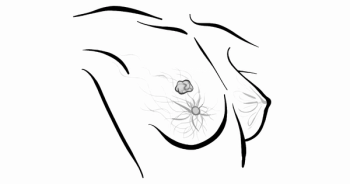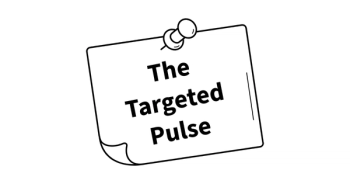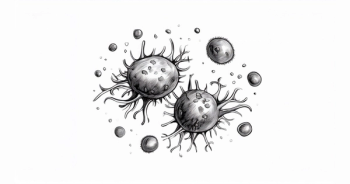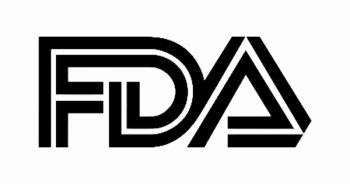
Mismatched Unrelated Donors and PTCy: Better HSCT Outcomes, Expanded Access
A groundbreaking trial shows promising survival rates and low GVHD in patients receiving mismatched stem cell transplants, expanding treatment options for diverse populations.
A phase 2, nonrandomized, multicenter trial (ACCESS; NCT04904588) demonstrated excellent 1-year overall survival (OS) and low rates of severe graft-vs-host disease (GVHD) in patients undergoing allogeneic hematopoietic stem cell transplantation (HSCT) from human leukocyte antigen (HLA)-mismatched unrelated donors (MMUDs). Patients received peripheral blood stem cells (PBSCs) and posttransplant cyclophosphamide (PTCy)-based GVHD prophylaxis.1
These findings, published in the Journal of Clinical Oncology, are particularly significant for patients from underrepresented racial and ethnic groups, who more frequently face challenges in identifying HLA-matched donors, offering a crucial expansion of curative treatment options for advanced hematologic malignancies.
Allogeneic HSCT remains a potentially curative therapy for a range of advanced hematologic malignancies. However, the use of HLA-mismatched donors has historically been associated with inferior survival outcomes due to an increased risk of GVHD. This challenge disproportionately affects patients from underrepresented racial and ethnic groups, who often have more complex HLA haplotypes, limiting their access to suitable HLA-matched related or unrelated donors in global registries.
The development of PTCy has been a major advance in GVHD prevention, initially showing success in HLA-haploidentical related HSCT and later in matched and mismatched unrelated donor transplants, by selectively targeting proliferating alloreactive T cells after engraftment. While bone marrow grafts have been studied with PTCy in MMUD settings, PBSCs are often preferred due to logistical advantages for donors, despite historical associations with higher rates of acute and chronic GVHD. The ACCESS study sought to determine if PTCy could effectively control GVHD when using PBSC grafts from MMUDs.
Study Design and Key Efficacy Results
The ACCESS trial was a prospective, phase 2, nonrandomized, multicenter study that enrolled 145 adult patients between September 2021 and August 2023 from 21 centers in the US. Patients had advanced hematologic malignancies and were undergoing their first allogeneic HSCT from MMUDs.
The study stratified patients into 2 cohorts based on conditioning regimen intensity: myeloablative conditioning (MAC, n = 75) and reduced intensity or nonmyeloablative (RIC/NMA, n = 70). All patients received PBSC grafts. The GVHD prophylaxis regimen included cyclophosphamide (50 mg/kg on days +3 and +4 post-HSCT), tacrolimus, and mycophenolate mofetil. The primary end point was to estimate 1-year OS for each stratum.
The study achieved favorable 1-year OS rates in both strata:
- MAC stratum: 83.8% (95% CI, 73.1%-90.4%)
- RIC/NMA stratum: 78.6% (95% CI, 67%-86.5%)
These outcomes were achieved with notably low rates of severe GVHD. The incidences of grades 3 to 4 acute GVHD at 6 months were 8% (95% CI, 3.2%-15.6%) for MAC and 10% (95% CI, 4.4%-18.4%) for RIC/NMA. Moderate-to-severe chronic GVHD at 1 year was also low, at 10.3% (95% CI, 4.4%-18.9%) for MAC and 8.6% (95% CI, 3.5%-16.6%) for RIC/NMA.
Importantly, the study enrolled a high proportion of patients (59%) who self-identified within an underrepresented racial or ethnic group, with 71% in the MAC cohort and 46% in the RIC/NMA cohort. An exploratory analysis revealed that OS did not differ significantly based on the degree of HLA mismatch.
Specifically, among patients whose donors matched at fewer than 7 of 8 HLA alleles (comprising 32% of the overall cohort), 1-year OS was similar to those with donors matched at 7 of 8 alleles (MAC: 90.9% for <7/8 vs. 80.6% for 7/8; RIC/NMA: 82.6% for <7/8 vs 76.6% for 7/8). This suggests that excellent outcomes can be achieved even with greater degrees of HLA mismatch, directly expanding the accessible donor pool.
Safety Profile and Clinical Significance
The safety profile observed in the ACCESS trial was generally consistent with known risks associated with HSCT. The incidence of grade 3 to 4 cytokine release syndrome within 14 days was low (1.3% for MAC, 1.4% for RIC/NMA). Primary graft failure was not observed in the MAC stratum, with 4 cases in the RIC/NMA stratum.
While low rates of GVHD were achieved, high rates of bacterial and viral infections were observed, consistent with prior data on PTCy-based GVHD prophylaxis, likely due to prolonged myelosuppression and T-cell–mediated immunosuppression. Organ toxicities were in line with previous studies.
While these 1-year outcomes are promising, the study authors acknowledge the need for longer follow-up to confirm the durability of engraftment and the sustained low risk of chronic GVHD. Future research, such as the ongoing National Marrow Donor Program-sponsored OPTIMIZE study (NCT03797196), is investigating strategies to mitigate PTCy-related toxicities, including dose reduction, without compromising GVHD control.
This study's results lay the groundwork for future randomized trials to compare MMUD HSCT with haploidentical donor transplantation, ultimately striving to optimize access and outcomes for all patients requiring HSCT, regardless of their ancestry or socioeconomic vulnerability.










































